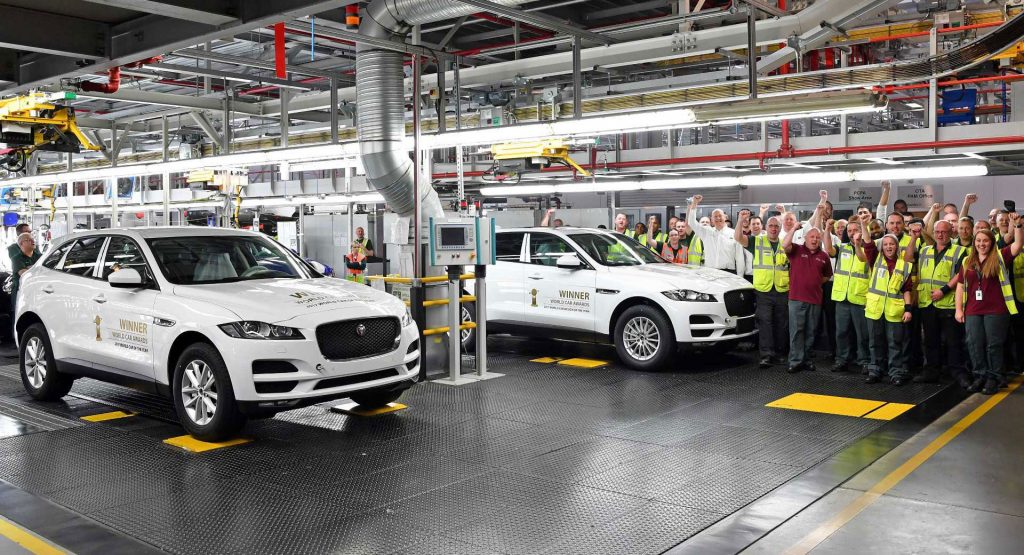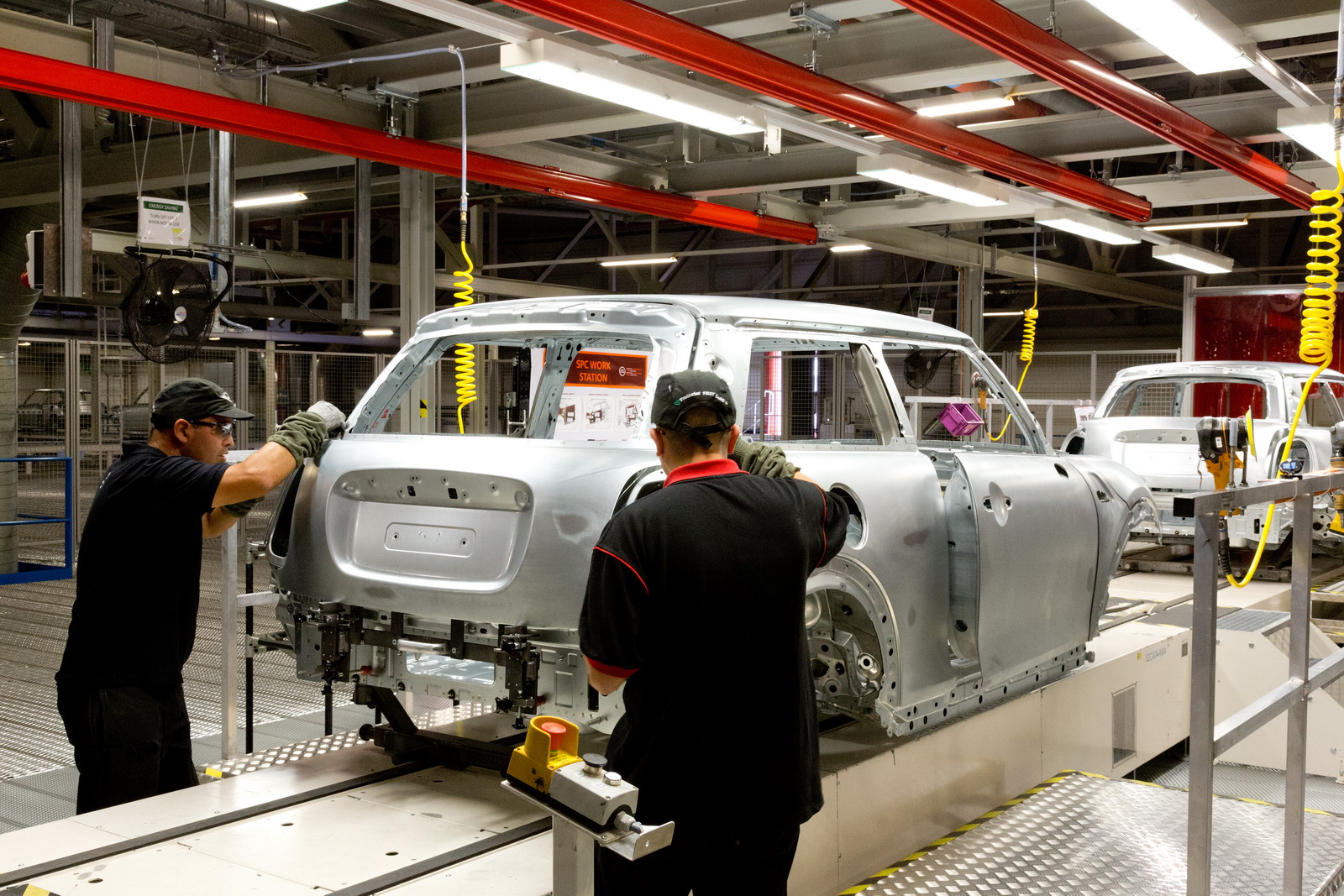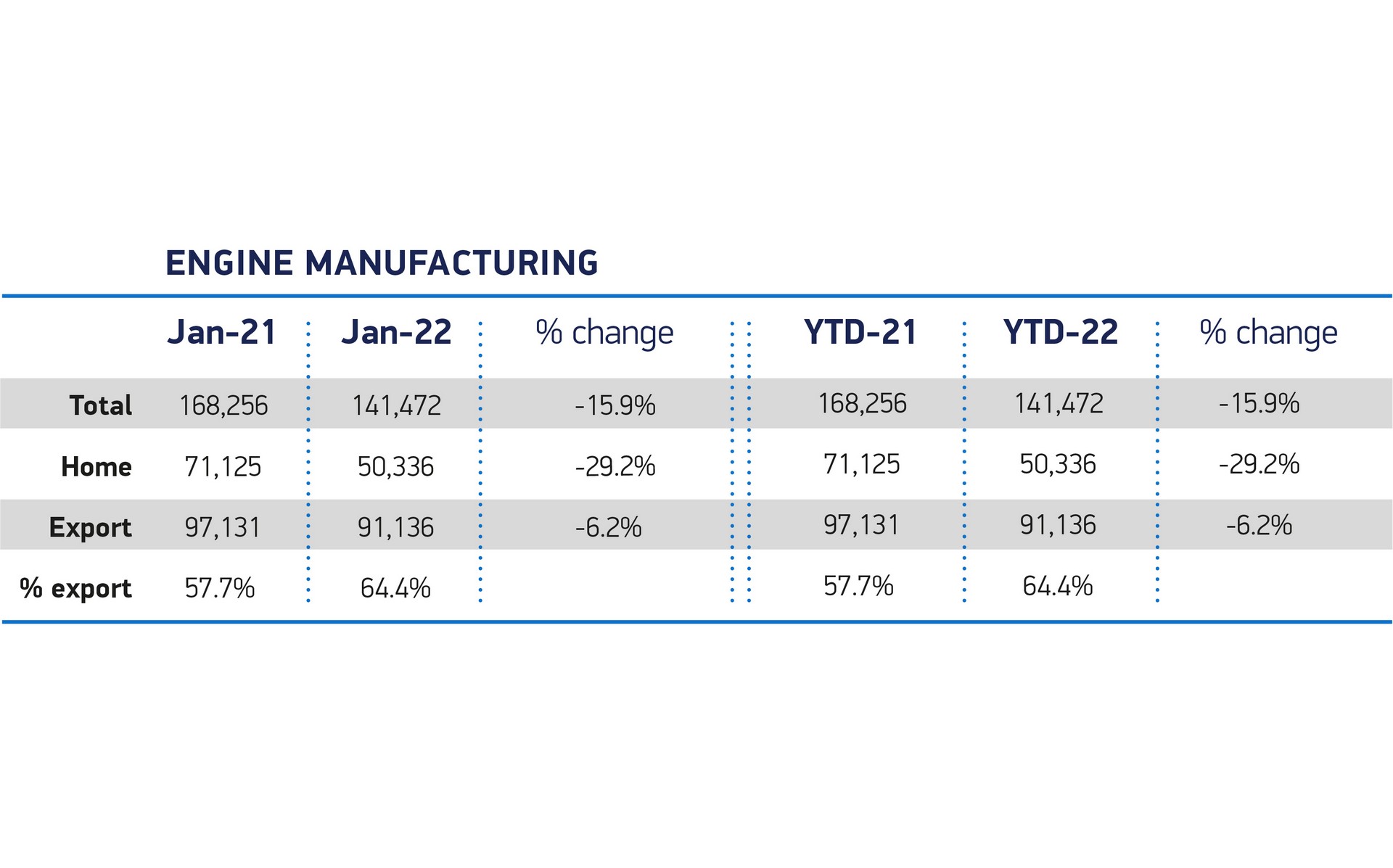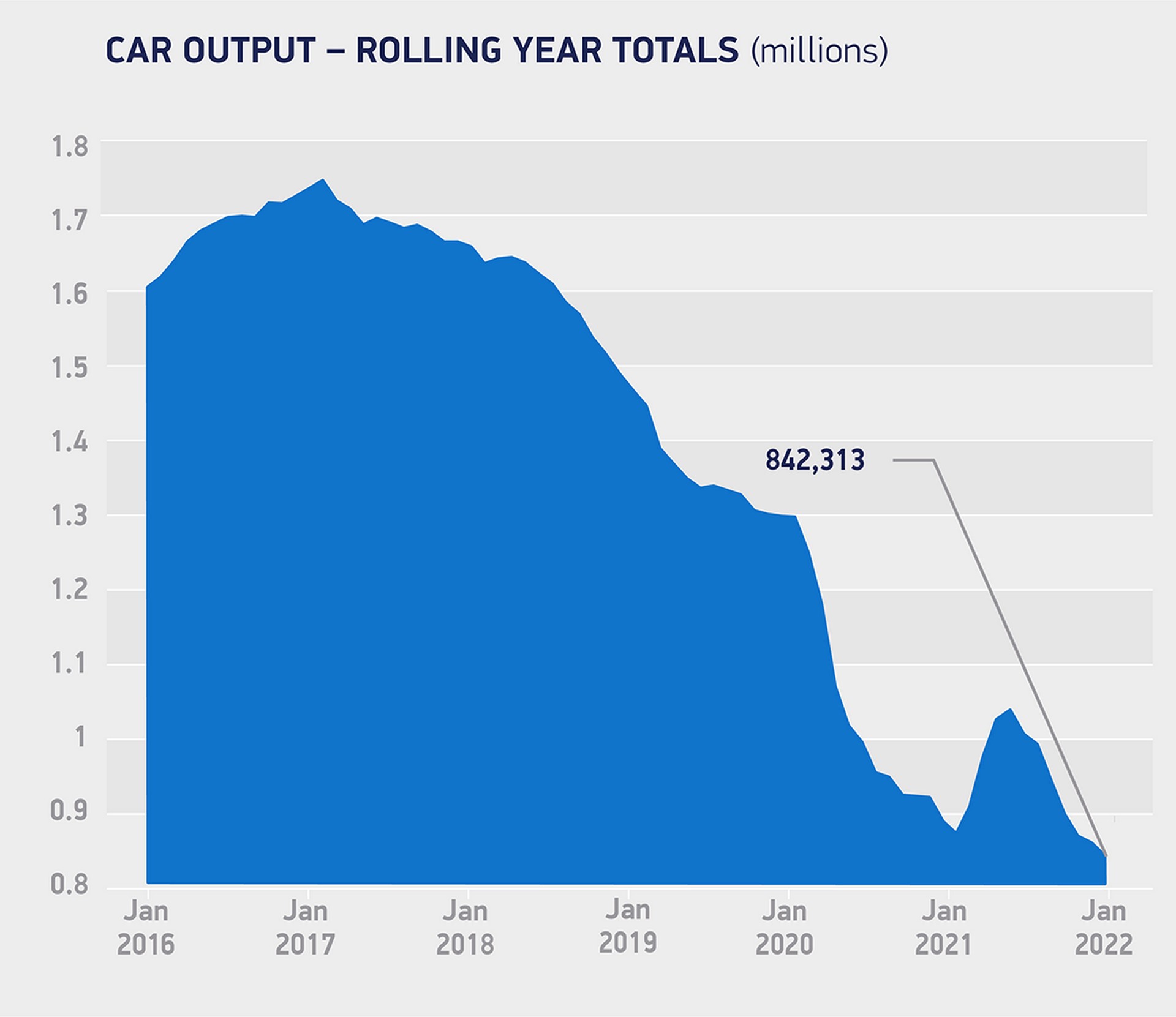British car production fell by more than 20 per cent in January compared to the year prior, new data has revealed.
Figures from the Society of Motor Manufacturers and Traders (SMMT) reveal that a total of 68,790 vehicles were produced in the UK throughout January, 17,262 fewer than in the same month in 2021. That’s a big difference, particularly when you consider that last year’s figures for January were among the worst recorded on the back of the COVID-19 pandemic, plant closures, and post-Brexit trading regulations.
“It’s another torrid start to the year as global supply issues and structural changes squeeze output while model changes impact production scheduling,” SMMT chief executive Mike Hawes said in a statement. “The UK automotive manufacturing industry is, however, fundamentally strong and recent investment announcements are testament to the potential for growth, not least in terms of rising EV production.”
Read Also: New Mazda2 Hybrid Is Cheaper Than Its Toyota Yaris Twin In The UK
It’s not just car production that was impacted in January. The SMMT has also revealed that engine manufacturing fell steeply throughout the month with a total of 141,472 engines produced, 50,336 of which were for the British market while the remaining 91,136 were exported internationally. By comparison, 168,256 engines were built in the UK in January 2021, 15.9 per cent more than this year. Of those, 71,125 were for the local market and 97,131 were exported.
“The impact of global semiconductor shortages continues to stall engine production and, with rising energy costs and inflation, the outlook remains challenging,” added Hawes. “We need a clear strategy and long-term support to keep the UK internationally competitive, attract investment and ensure this critical sector can transition to an electrified future, futureproofing highly skilled jobs and livelihoods for the decades ahead.”
Hawes told Autocar that the long-term recovery of British car and engine production can only be secured if global competitiveness is assured and if inflationary and fixed costs are addressed.







